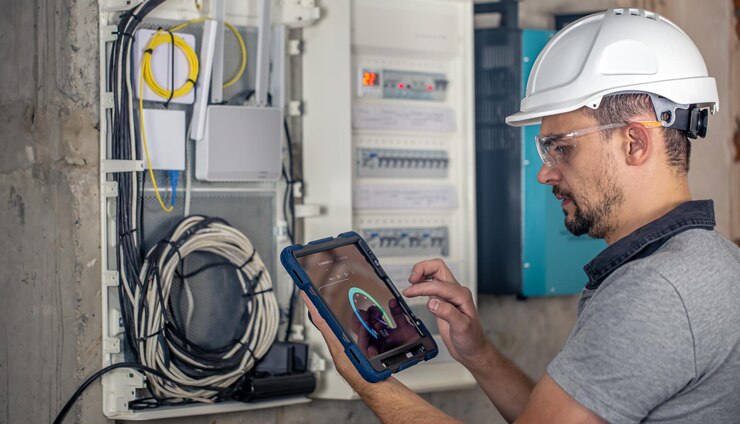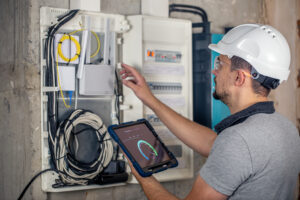Ever flipped a switch and nothing happens? Or heard that scary buzzing sound from your breaker box? Yeah, that gut-dropping moment when you realize you need an electrician—but not just any electrician—a licensed electrician in Arlington, TX who won’t mess things up worse than they already are.
Why You Can’t Just Hire Your “Handy” Uncle Bob
Look, we all know that one relative who claims they can “fix anything.” But when it comes to electrical work, DIY disasters aren’t just expensive—they can be deadly. A licensed electrician in Arlington, TX has jumped through all the right hoops: years of apprenticeship, passing those brutal state exams, and staying current on codes that change faster than Texas weather.
The guy who “knows a thing or two about wiring” doesn’t have insurance. When (not if) something goes wrong, guess who’s on the hook for damages? Not them—you.
The Real Deal: What to Look for in an Electrician
Here’s what separates the professionals from the pretenders:
- That License Isn’t Just a Piece of Paper: When you’re checking out a licensed electrician in Arlington, TX, actually verify their license number on the TDLR website. Too many homeowners skip this step and end up with someone who’s “still working on getting licensed”—aka not licensed at all.
- Local Experience Matters: Arlington has its own electrical quirks—from older homes in central neighborhoods to new construction in south Arlington. Someone who’s been working local jobs knows what to expect when they open up your walls.
- Insurance That Actually Covers Something: Ask about their coverage limits. Some fly-by-night operations carry the bare minimum insurance that wouldn’t cover replacing a toaster, let alone repairing fire damage.
How to Spot the Good Ones (Without Being an Electrical Expert)
The Neighborhood Grapevine Doesn’t Lie
Next time you’re at a block party or chatting at the school pickup line, ask who’s handling electrical work in the neighborhood. People love sharing horror stories—if an electrician left a huge mess or didn’t fix the problem, you’ll hear about it. And when someone raves about their guy? That’s gold.
Stalking (The Professional Kind) on Review Sites
Don’t just glance at star ratings. Dig into those reviews and look for the specifics:
- “They showed up when they said they would” (apparently a miracle in the service industry)
- “Explained what was wrong without making me feel stupid”
- “Cleaned up so well you couldn’t tell they were here”
- “Didn’t try to upsell me on stuff I didn’t need”
Red flags? Multiple mentions of “showed up late,” “kept changing the price,” or “had to call them back to fix their fix.”
The Phone Test: 60 Seconds to Spot a Pro
When you call a licensed electrician in Arlington, TX, pay attention to:
- Do they answer with a professional greeting or sound like you woke them up?
- Can they have an actual conversation about your problem, or are they rushing to give you a price?
- Do they ask questions about your home’s age or your electrical panel?
- Are they willing to explain their diagnostic process?
The Truth About What Quality Electrical Work Costs
Here’s the unvarnished truth: good electrical work isn’t cheap, and cheap electrical work isn’t good. A skilled licensed electrician in Arlington, TX has:
- Thousands of hours of training
- Expensive professional-grade tools
- Continuing education to stay current
- Overhead costs like insurance and licensing
- Knowledge that literally saves lives
You’re not just paying for the hour they spend fixing your problem—you’re paying for the decade they spent learning how to fix it right the first time.
When to Drop Everything and Call a Pro
Some electrical issues scream “emergency”:
- That outlet with the brown marks around it
- Lights that dim when the AC kicks on
- The breaker that trips every time it rains
- The smell of hot plastic or burning wire
Don’t mess around with this stuff. A licensed electrician in Arlington, TX can spot the difference between an annoyance and a ticking time bomb.
The Bottom Line: It’s Your Home at Stake
Finding the right electrician takes more effort than picking the first Google result, but it’s worth it when you find someone who:
- Shows up when promised
- Fixes the actual problem, not just the symptoms
- Charges what they quoted
- Leaves your home as clean as they found it
- Explains what they did in plain English
Remember, the goal isn’t finding the cheapest licensed electrician in Arlington, TX—it’s finding the one who’ll keep your home safe, your family protected, and your electrical system running smoothly for years to come.
Because at 2 AM when you smell something electrical burning, you want to know exactly who to call—and trust them to answer.






